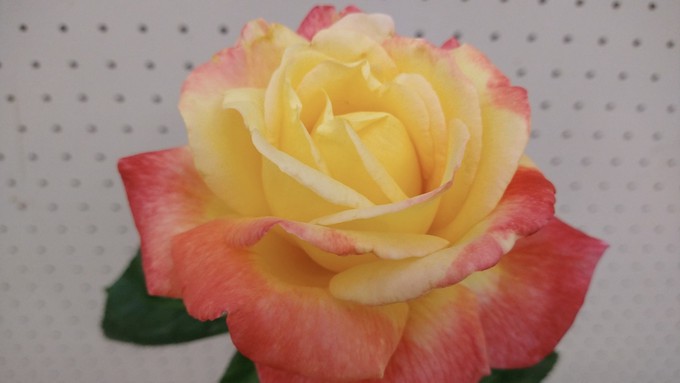
Roses are more popular than ever, but what do they mean?

This beauty is the Love and Peace rose, a moderately fragrant hybrid tea. Debbie Arrington
Happy Valentine’s Day! This is not only a date to celebrate romance but a good time to talk roses.
More than 250 million roses were produced for this Valentine’s Day, says the Society of American Florists. Those bouquets represent the bulk of an estimated $2.6 billion that Americans will spend on Valentine flowers this year, says the National Retail Federation.
Roses are by far the most popular gift flower year round, and their demand continues to grow. In 1989, Americans bought an estimated 1 billion roses over the course of the entire year (with Valentine’s Day being the peak period for rose sales). In 2023, U.S. rose sales hit 2.8 billion stems – enough for every adult American to get one 10-rose bouquet (plus a lot left over).
Why roses? According to florists, roses carry a lot of extra meaning, especially as a symbol of love.
That emotion has many shades, with different rose colors evoking various meanings. According to online florist BloomsyBox, roses hint at these qualities:
*White roses: Innocence and purity.
* Pink roses: Romance and happiness.
* Coral roses: Desire.
* Yellow roses: Love between friends.
* Peach roses: Modesty and appreciation.
* Lavender roses: Love at first sight.
* Red roses: Passionate love.
Most of those meanings were well known to Victorians, who used flowers to send coded messages.
In 1884, Kate Greenaway, a wildly popular illustrator of Victorian children’s books, created her illustrated “Language of Flowers” with hundreds of referenced blooms. Greenaway included 34 meanings just for roses (including those above), depending on their variety, color and form.
As for “love,” there are dozens of possible bouquet candidates (including fillers as well as flowers), depending on the intensity of that affection. Among them: Yellow acacia (“secret love”), ambrosia (“love returned”), red mum (“I love you”), yellow mum (“slighted love”), purple lilac (“first emotions of love”), lotus (“estranged love”), magnolia (“love of nature”), moss (“maternal love”), pear blossoms (“affection”) and pink carnations (“a woman’s love”).
As for adding a little rose love to your garden, February is a wonderful time to plant new bushes. The names of more than 15 varieties start with the word “Love,” “Love’s” or “Loving.” That includes the red grandiflora ‘Love’ as well as the hybrid teas ‘Love and Peace,’ ‘Love at First Sight,’ ‘Love Me Tender’ and ‘Loving Memory.’
For more on roses: https://www.rose.org/
Comments
0 comments have been posted.Sacramento Digs Gardening to your inbox.
Sites We Like
Garden Checklist for week of July 21
Your garden needs you!
* Keep your vegetable garden watered, mulched and weeded. Water before 8 a.m. to reduce the chance of fungal infection and to conserve moisture.
* Feed vegetable plants bone meal, rock phosphate or other fertilizers high in phosphate to stimulate more blooms and fruiting. (But wait until daily high temperatures drop out of the 100s.)
* Don’t let tomatoes wilt or dry out completely. Give tomatoes a deep watering two to three times a week.
* Harvest vegetables promptly to encourage plants to produce more. Squash especially tends to grow rapidly in hot weather. Keep an eye on zucchini.
* Pinch back chrysanthemums for bushy plants and more flowers in September.
* Remove spent flowers from roses, daylilies and other bloomers as they finish flowering.
* Pinch off blooms from basil so the plant will grow more leaves.
* Cut back lavender after flowering to promote a second bloom.
* It's not too late to add a splash of color. Plant petunias, snapdragons, zinnias and marigolds.
* From seed, plant corn, pumpkins, radishes, winter squash and sunflowers.